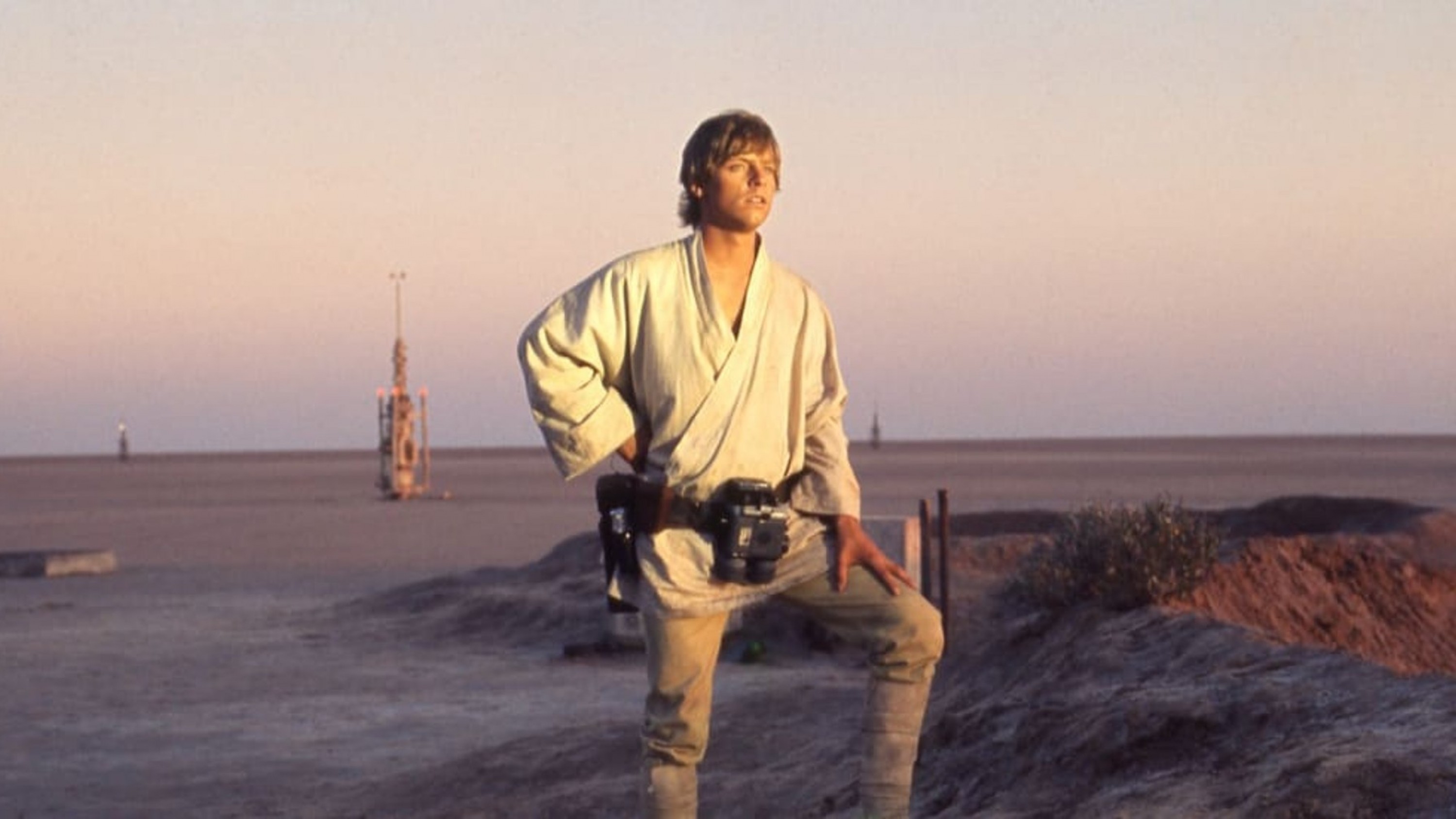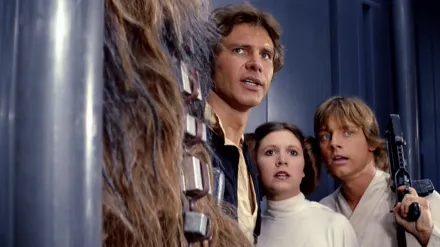Star Wars: Episode IV – A New Hope (1977)

Star Wars: Episode IV – A New Hope (1977)
Star Wars: Episode IV – A New Hope, directed by George Lucas, is the epic space opera that launched one of the most iconic franchises in film history. Released in 1977, it follows the journey of a young farm boy who becomes a hero in a galaxy caught in the grip of tyranny.
The story is set in a distant galaxy where the evil Galactic Empire, led by the sinister Darth Vader, rules with an iron fist. The Rebel Alliance, a group of freedom fighters, steals secret plans for the Empire’s ultimate weapon—the Death Star, a space station capable of destroying entire planets. Princess Leia Organa, a Rebel leader, hides the plans in the memory of a droid, R2-D2, and sends him to the desert planet Tatooine.

R2-D2 and his companion, the talkative protocol droid C-3PO, are found by a humble moisture farmer named Luke Skywalker. When Luke accidentally triggers part of Leia’s recorded message pleading for help, he seeks out Obi-Wan Kenobi, a mysterious hermit who is actually a Jedi Knight in hiding. Obi-Wan reveals to Luke that his father was also a Jedi, betrayed and killed by Darth Vader. He gives Luke his father’s lightsaber and urges him to learn the ways of the Force.

Together, they hire a roguish pilot, Han Solo, and his co-pilot Chewbacca to transport them aboard the Millennium Falcon. Their mission: rescue Princess Leia and deliver the Death Star plans to the Rebel base. After a daring escape from the Death Star—where Obi-Wan sacrifices himself in a duel with Vader—the group reaches the Rebels.
Using the hidden plans, the Rebels discover a weakness in the Death Star. In the film’s thrilling climax, Luke joins the Rebel fighters in a desperate attack. Guided by the Force and Obi-Wan’s voice from beyond, Luke destroys the Death Star just before it can annihilate the Rebel base.
A New Hope is a timeless tale of heroism, friendship, and the struggle between good and evil. With groundbreaking special effects, unforgettable characters, and a sweeping John Williams score, it redefined cinematic storytelling and became a cultural phenomenon that still resonates today.











